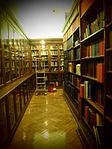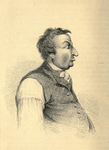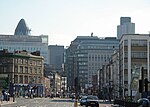Bishopsgate Institute
1895 establishments in EnglandArt Nouveau architecture in LondonArt Nouveau educational buildingsBuildings and structures completed in 1895Further education colleges in London ... and 4 more
Grade II* listed buildings in the City of LondonLibraries in the City of LondonOrganizations established in 1895Use British English from December 2012

Bishopsgate Institute is a cultural institute in the Bishopsgate Without area of the City of London, located near Liverpool Street station and Spitalfields market. The institute was established in 1895. It offers a cultural events programme, courses for adults, historic library and archive collections and community programme.
Excerpt from the Wikipedia article Bishopsgate Institute (License: CC BY-SA 3.0, Authors, Images).Bishopsgate Institute
Brushfield Street, City of London
Geographical coordinates (GPS) Address External links Nearby Places Show on map
Geographical coordinates (GPS)
| Latitude | Longitude |
|---|---|
| N 51.518688888889 ° | E -0.079316666666667 ° |
Address
Bishopsgate Institute
Brushfield Street
EC2M 4QH City of London
England, United Kingdom
Open on Google Maps










